In photos: Spooky deep-sea creatures
Saber-Toothed Viperfish
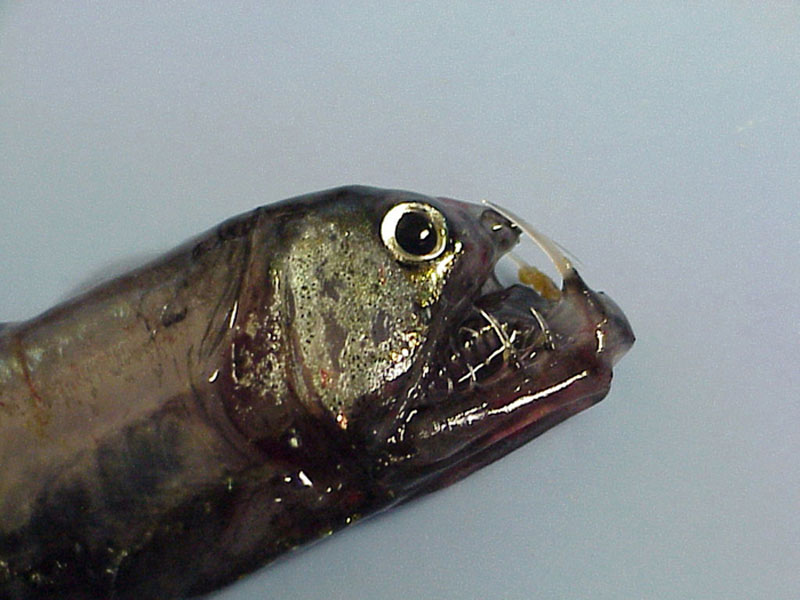
The fittingly named viperfish has long, needle-like teeth and hinged lower jaws. This deepwater monster prefers warm tropical waters, where it sinks its fang-like teeth into prey, immobilizing them.
Spooky Sea slug
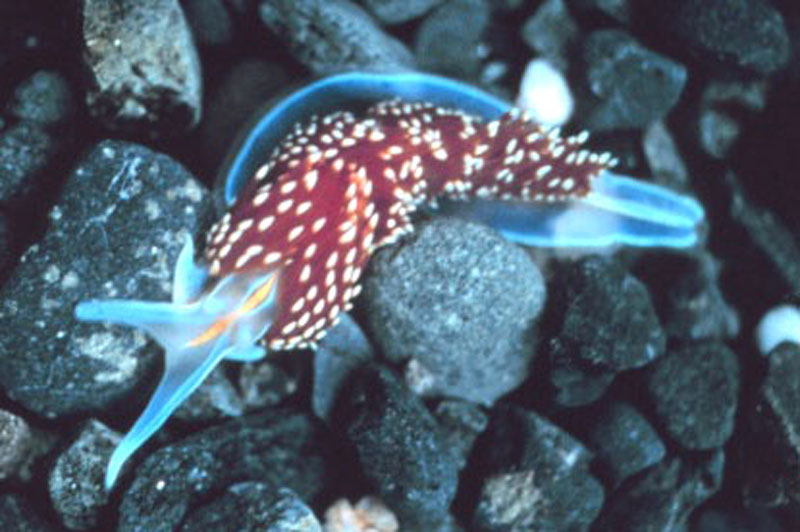
Bottom-dwelling sea slugs come in all the colors of the rainbow, including blood red and a shade of neon blue that almost makes the above mollusk appear to be ablaze. Most sea slugs are carnivorous and some have sharp jaws and file-like rows of teeth. Called radula, these teeth are used to scrape away a prey's flesh. Although most sea slugs are less than 2 inches in length, some species can grow to be more than 12 inches (30.48 cm) long.
Crimson Jellyfish

A deep-sea jellyfish, the blood-red Atolla wyvillei emits a spooky blue light when it is threatened by a predator. Its bioluminescent light flashes in a hypnotic, rotating pinwheel pattern around its body.
Spiky Sea Urchin

Small, spiny and round, sea urchins often have sharp spindles surrounding their bodies to protect them from predators. Their coloring can be black, brown, purple, red or olive green. The California purple sea urchin (Strongylocentrotus purpuratus) in the above photo is a needle-y species that is a deep plum color.
Deadly Sea Cucumber
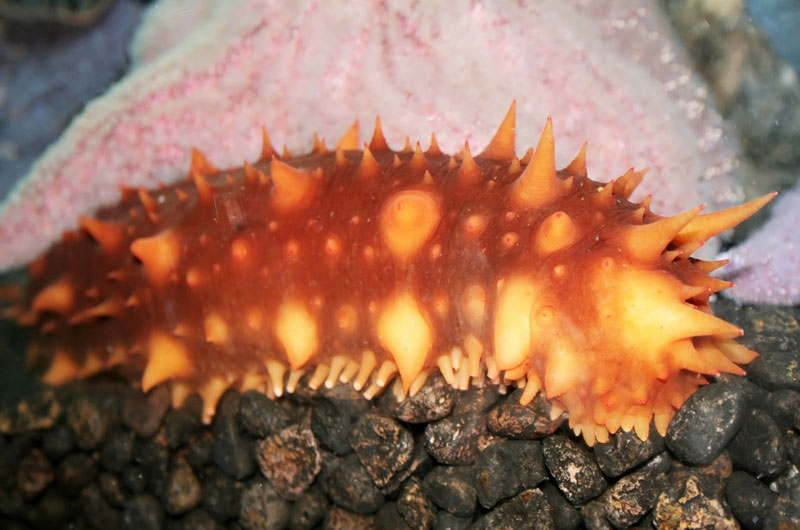
Sea cucumbers can be found calmly crawling on the seafloor, but their goofy appearance and benign demeanor hide a dark secret. When startled or attacked by a predator, some species of sea cucumbers release a toxic chemical known as holothurin that has the ability to kill — or at least stun — any animal in its vicinity.
Halloween Holothurians

Not all species of sea cucumbers (Holothurians) look like, well, cucumbers. Some species, which have swaying branch-like tentacles on one end of their long bodies, more closely resemble a chubby stalk of broccoli. Above is a colorful shot of a purple and orange-colored sea cucumber with its tentacles spread out.
Scary Stargazer
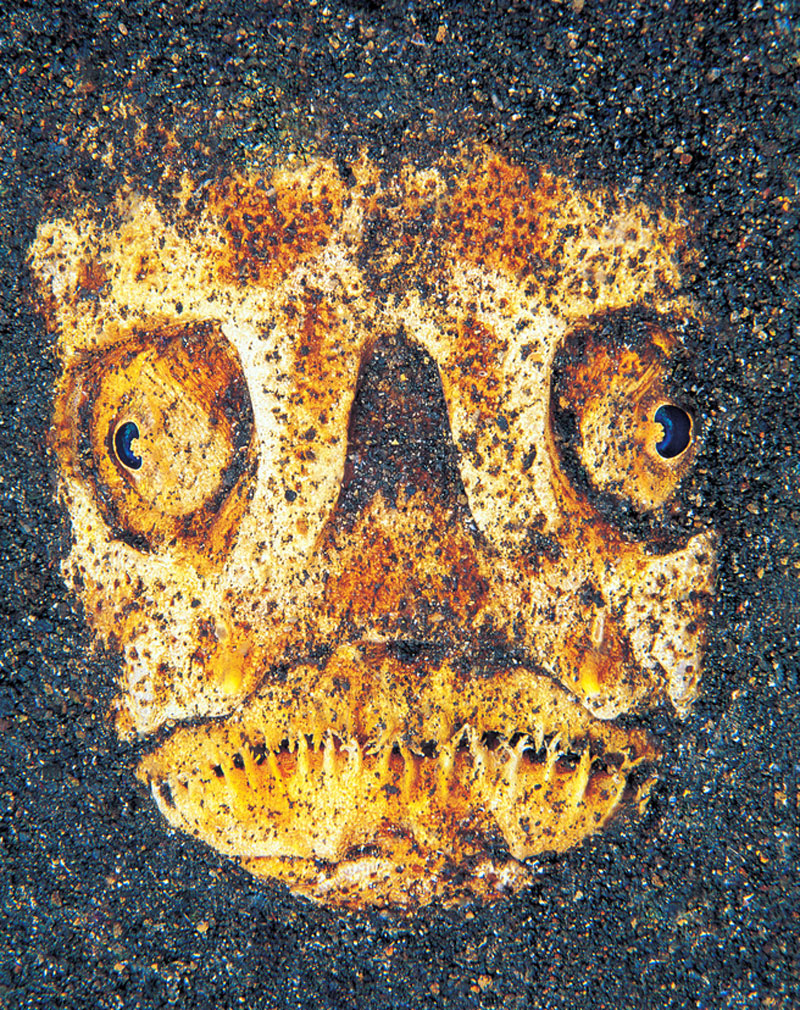
This frightening fish is charmingly named stargazer, because its eyes are situated on top of its head. The fish burrows its flat body underneath the sand, hiding itself so that it is still able to peek out. It then hunkers down waiting to strike if prey swims by. Although many stargazers dwell in shallow water, Northern stargazers live in the deep waters off the Atlantic Coast.
Get the world’s most fascinating discoveries delivered straight to your inbox.
Malevolent Moray Eel
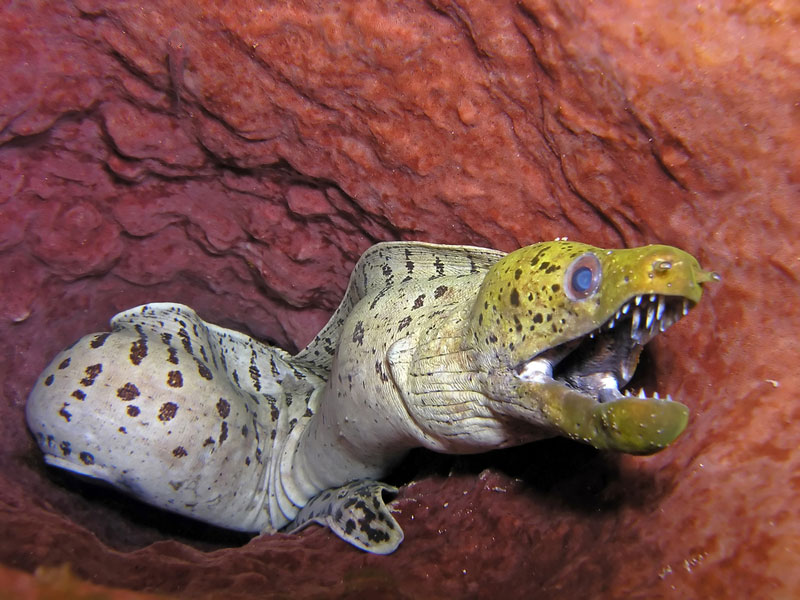
The toothy, scary-looking creature pictured above is a moray eel. Most moray eels, including the Gymnothorax bathyphilus, a deepwater moray eel found in the South Pacific Ocean, have short, serrate teeth, though some species have longer, fang-like teeth.
Neon Eel
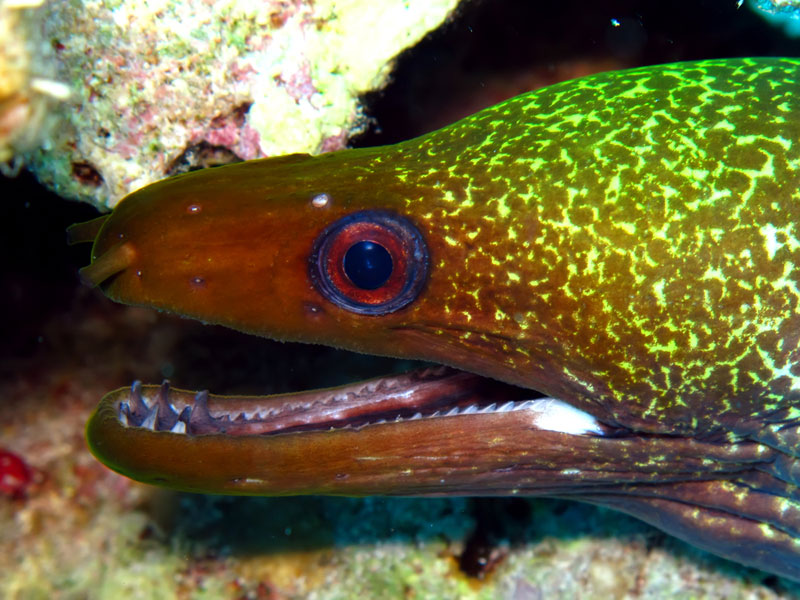
This close-up view of the Gymnothorax undulates species of moray eel shows its distinctive pattern of light, lime-green speckles on a dark olive background. Its sinister smile brings to mind the malicious twin moray eels from Disney's "The Little Mermaid."
Armored Searobin

Found in deep tropical waters around the world, the coral-red armored searobins have bodies encased in heavy scales. They also possess prominent spines, with barbels on their chins for luring in unsuspecting prey.


